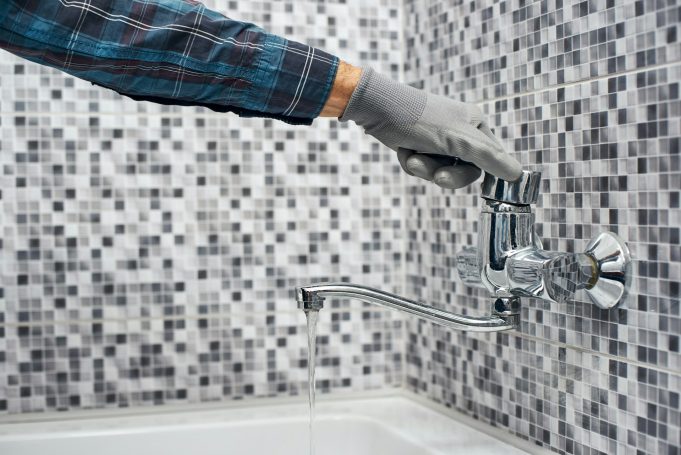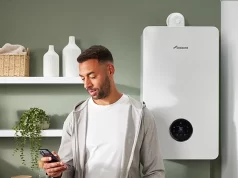Most homeowners don’t think twice about the connection between their plumbing and the air they breathe indoors. However, hidden plumbing issues can silently compromise the quality of indoor air, posing risks to health, comfort, and property. From unnoticed leaks to sewer gas infiltration, various plumbing problems can contribute to poor air quality, making it important to understand the warning signs and preventative steps. This article explores how plumbing plays a key role in maintaining a healthy home environment, what signs to look out for, and how to address problems before they escalate.
The Often-Ignored Connection Between Plumbing and Indoor Air Quality
Indoor air quality (IAQ) describes the state of the air within a home and how it impacts the health and comfort of those living there. Several elements play a role in determining IAQ, such as airflow, moisture levels, airborne contaminants, and particulate matter. While mould and dust are commonly blamed for respiratory discomfort, hidden plumbing problems are often an unrecognized culprit. Leaks, standing water, poor drainage, and faulty venting systems can all introduce or trap contaminants that degrade air quality. In some cases, these issues may linger unnoticed behind walls, beneath floors, or in basements, slowly building up into major concerns.
Common Plumbing Issues That Impact Air Quality
1. Sewage Odours and Venting Problems
One of the most immediate signs of plumbing-related air quality problems is the presence of foul smells, especially in bathrooms. These odours often come from dry P-traps, blocked sewer lines, or broken vent stacks. When plumbing venting is inadequate, sewer gases like methane or hydrogen sulphide can enter the home. These gases are not only unpleasant but can also cause headaches, fatigue, dizziness, and nausea with prolonged exposure. Even if the smell seems minor, it may be a sign of a bigger issue in the drainage or venting system that should be addressed promptly.
2. Water Leaks and Humidity
Small leaks from pipes under sinks, in basements, or inside walls may not be immediately noticeable. Yet, they play a role in increasing indoor humidity levels, which in turn fosters the growth of mould, mildew, and dust mites. These allergens flourish in damp conditions and may trigger respiratory problems, worsen asthma symptoms, and irritate the skin, particularly among young children and older adults. Excess moisture can also deteriorate materials like drywall, wood, and insulation over time, potentially resulting in structural harm and expensive repair work.
3. Mould Growth from Plumbing Failures
Mould is one of the most common by-products of hidden plumbing issues. When a pipe leaks or a drain overflows, the resulting dampness can create ideal conditions for mould to grow within 24 to 48 hours. While some mould types are mostly harmless, others — like black mould — release spores and mycotoxins that can be harmful when inhaled. Mould behind walls or under flooring can spread unnoticed for months, causing indoor air to become stale, musty, and unhealthy to breathe.
4. Improper Drainage and Backups
Poor drainage or recurring backups in sinks, showers, or floor drains can release bio-contaminants and organic waste into the air. Stagnant water in pipes or sump pits may emit unpleasant odours and increase the risk of airborne bacteria or volatile organic compounds (VOCs) that negatively affect indoor air. Regular maintenance and inspections of drains can prevent these issues and reduce health risks associated with poor IAQ.
Warning Signs You Shouldn’t Ignore
Not all plumbing-related air quality problems are obvious. Here are a few signs to watch for:
- Persistent musty or sewage-like smells in bathroom
- Frequent headaches or respiratory discomfort indoors
- Visible mould around plumbing fixtures or walls
- Peeling paint or bubbling drywall near plumbing lines
- Unexplained increases in humidity or condensation on windows
If any of these are present in your home, it may be time to inspect your plumbing system more closely.
How to Protect Your Indoor Air
1. Regular Plumbing Inspections
Preventive inspections can identify small issues before they turn into larger air quality problems. Licensed plumbing experts can use diagnostic tools like moisture meters, infrared cameras, and pipe cameras to locate hidden leaks or blockages.
2. Improve Ventilation
Proper ventilation ensures that sewer gases and excess humidity don’t accumulate indoors. Exhaust fans in bathrooms and kitchens, along with clean, functioning plumbing vents, help regulate airflow and remove contaminants.
3. Fix Leaks Immediately
Even small leaks should be addressed as soon as they’re discovered. The cost of a minor repair is far less than the expense of mould remediation or structural repairs caused by prolonged water damage.
4. Monitor Humidity Levels
A dehumidifier can assist in maintaining indoor humidity levels within the optimal range of 30% to 50%, promoting comfort and helping to prevent mould growth. If you notice that humidity is high even with a dehumidifier, a plumbing issue may be contributing to the moisture.
Final Thoughts
Plumbing problems do more than just waste water or damage property — they can also compromise the air you and your family breathe every day. Whether it’s mould from hidden leaks or sewer gases creeping into your bathroom, plumbing issues can have a direct impact on indoor air quality and overall health. Keeping your home clean, dry, and properly ventilated begins with recognizing the often-unseen systems that help maintain it. Staying on top of plumbing maintenance and scheduling routine checks can greatly enhance both your living comfort and overall health.














